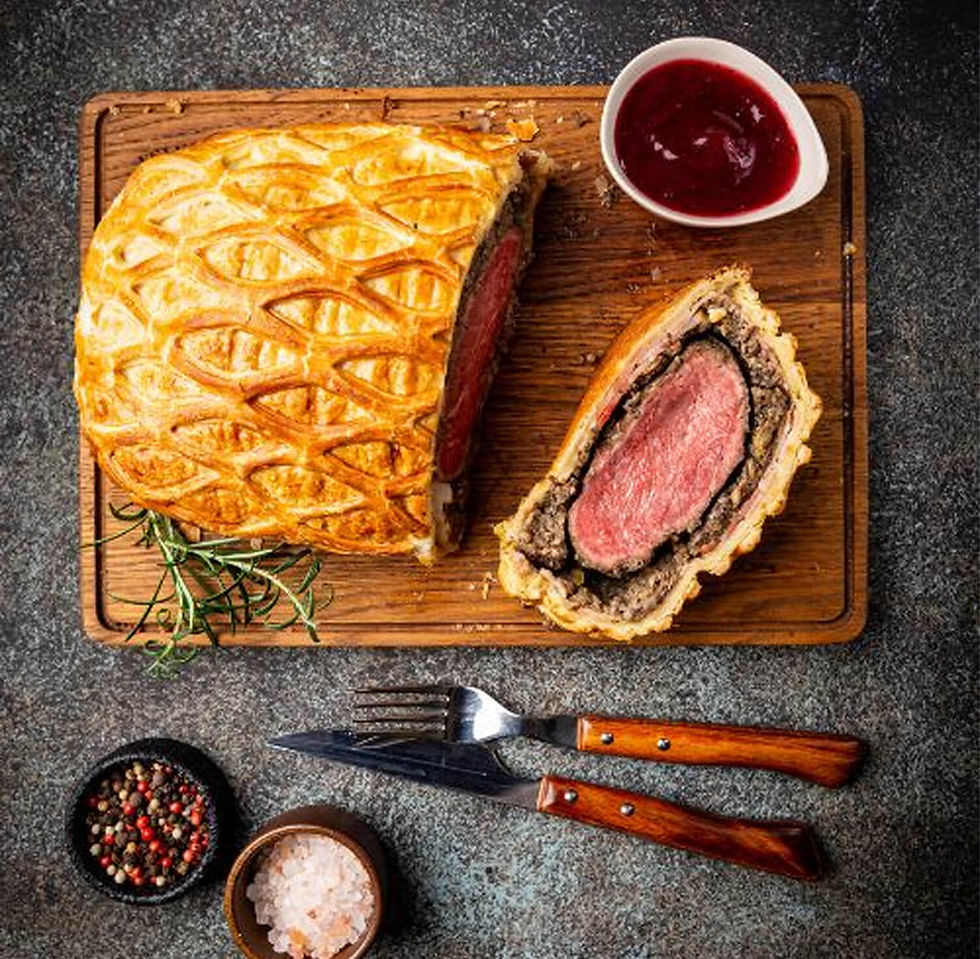The Sweet Mystery: Why "Organic" American Honey is Not a Thing
- Anna-Hayes
- Apr 25
- 3 min read
Updated: May 1
When we were originally developing Sparkle & Honey, we quickly realized we’d need two varieties: Organic and Pacific Northwest (which you can purchase here). The single difference between the two being the honey. Organic using an imported honey, usually Brazilian, and Pacific Northwest using honey from our backyard—Oregon.
That choice was driven by one thing, a desire to balance organic with local. And organic local honey isn’t a thing. What?! Yep. Read on for the sticky truth behind why finding truly certified organic honey from right here in America is pretty much impossible.

You see, while the folks at the USDA have rules for all sorts of yummy organic stuff, when it comes to our buzzy friends and their amazing honey, things get a little… well, unstandardized. Even though there are general organic guidelines, the US hasn't actually finalized clear, specific organic rules just for honey. It's been in the works for ages (like way back in 2001!), but we're still waiting on those official organic honey-lovin' standards.
So, What's the Buzz About the USDA and "Organic" Honey?
The USDA does have organic rules that cover things like raising livestock and in theory, some folks have tried to make those standards apply to beekeeping. But here's the thing: bees are free spirits! They zoom around collecting nectar from all sorts of flowers within a big radius. Ensuring bees visit only pesticide-free and GMO-free blooms across our diverse American landscape is a tall order—nearly impossible in regions where farms, cities, and wild spaces intersect.
Plus, our amazing beekeepers here in the US face some real challenges with bee health, like pesky mites and diseases. Sometimes, they need to step in with treatments to keep their colonies healthy, and those treatments might not always fit the super strict "organic livestock" guidelines.

Why Does Some Imported Honey Say "Organic" Then?
Good question! When you spot that "Organic" label on honey, it typically means that it is imported honey. But why?
Different Countries, Different Rules: Other countries around the world have often created their own specific organic standards for honey. So, that jar might be certified organic under the rules of, say, the European Union or Canada, which have their own, independent criteria for certification.
Applying General Rules (With a Big Question Mark): Sometimes, imported honey gets certified under the broader USDA organic livestock rules. Bees don’t respect fences, and, honestly, how can anyone really guarantee what every single bee in a hive has been up to for miles around? It's a tricky situation, even for the folks doing the certifying!
The Sweet Truth: "Organic" US Honey is More of a Wish Than a Reality (Right Now!)
The bottom line is this, because the US hasn't finalized its own specific organic standards for honey, seeing truly certified organic honey that was made right here at home is rarer than a kitten riding a unicorn. And while our local beekeepers are often incredibly dedicated to their bees and produce fantastic, pure honey using thoughtful practices, they can't really get that official "organic" stamp in a clear, standardized way under current US rules.
So instead of getting too hung up on giving Sparkle & Honey that "organic" label, we’ve committed to prioritizing the health of the bees, the environment, and you by cutting imported honey from our lineup because…
US Beekeepers are the Bee’s Knees! Many US beekeepers use sustainable methods that protect the hives from pesticides and exceed foreign standards for organic.
Standards Aren’t Standardized! Because the rules and the way they are applied vary widely between countries, it’s difficult to really know what “organic” means.
Appreciate the Local Goodness: Supporting American beekeepers means you're getting fresh, delicious honey and helping out your community – and that's pretty sweet in itself!
No matter what label Sparkle & Honey carries, our promise to make magic with all-natural, sustainability harvested ingredients and working with trusted beekeepers will always be a standard you can rely on.
1
Searing the Beef
Sear beef fillets on high heat for 2 minutes per side to form a golden crust. Let it cool before proceeding to keep the beef tender.
1
Searing the Beef
Sear beef fillets on high heat for 2 minutes per side to form a golden crust. Let it cool before proceeding to keep the beef tender.
1
Searing the Beef
Sear beef fillets on high heat for 2 minutes per side to form a golden crust. Let it cool before proceeding to keep the beef tender.
1
Searing the Beef
Sear beef fillets on high heat for 2 minutes per side to form a golden crust. Let it cool before proceeding to keep the beef tender.
Notes



1
Season the good fresh beef fillets with salt and black pepper. Heat olive oil in a pan over high heat and sear the fillets for 2 minutes per side until it fully browned. Remove the beef from the pan and brush with a thin layer of mustard. Let it cool.



1
Season the good fresh beef fillets with salt and black pepper. Heat olive oil in a pan over high heat and sear the fillets for 2 minutes per side until it fully browned. Remove the beef from the pan and brush with a thin layer of mustard. Let it cool.



1
Season the good fresh beef fillets with salt and black pepper. Heat olive oil in a pan over high heat and sear the fillets for 2 minutes per side until it fully browned. Remove the beef from the pan and brush with a thin layer of mustard. Let it cool.



1
Season the good fresh beef fillets with salt and black pepper. Heat olive oil in a pan over high heat and sear the fillets for 2 minutes per side until it fully browned. Remove the beef from the pan and brush with a thin layer of mustard. Let it cool.
Instructions
Quality Fresh 2 beef fillets ( approximately 14 ounces each )
Quality Fresh 2 beef fillets ( approximately 14 ounces each )
Quality Fresh 2 beef fillets ( approximately 14 ounces each )
Beef Wellington

Beef Wellington
Fusion Wizard - Rooftop Eatery in Tokyo
Author Name

Beef Wellington is a luxurious dish featuring tender beef fillet coated with a flavorful mushroom duxelles and wrapped in a golden, flaky puff pastry. Perfect for special occasions, this recipe combines rich flavors and impressive presentation, making it the ultimate centerpiece for any celebration.
Servings :
4 Servings
Calories:
813 calories / Serve
Prep Time
30 mins
Prep Time
30 mins
Prep Time
30 mins
Prep Time
30 mins






Comments